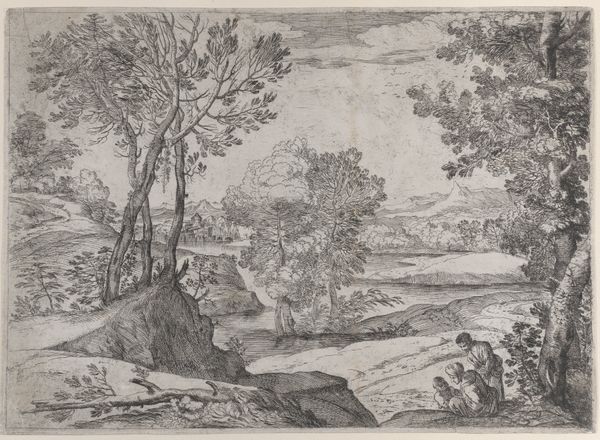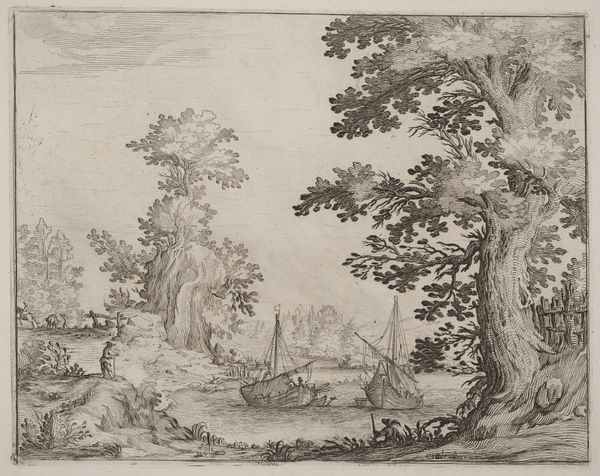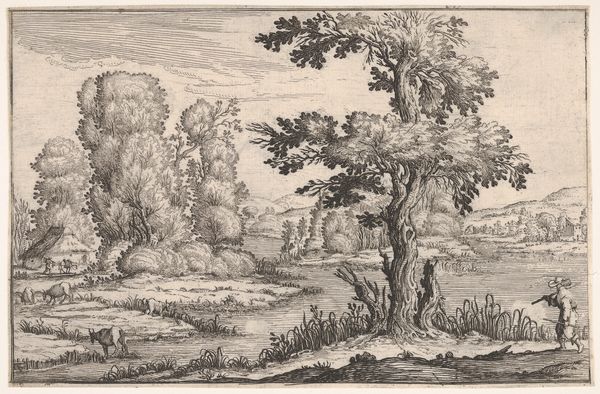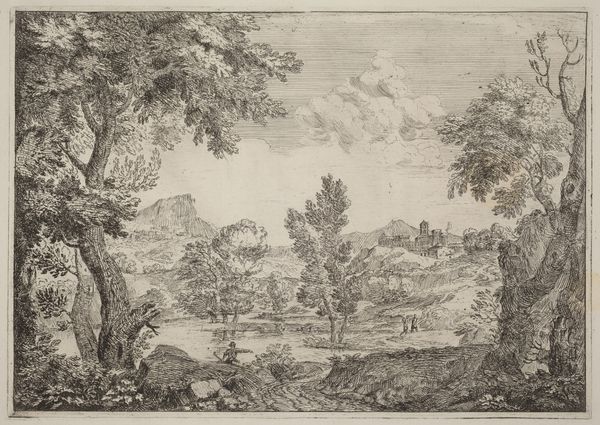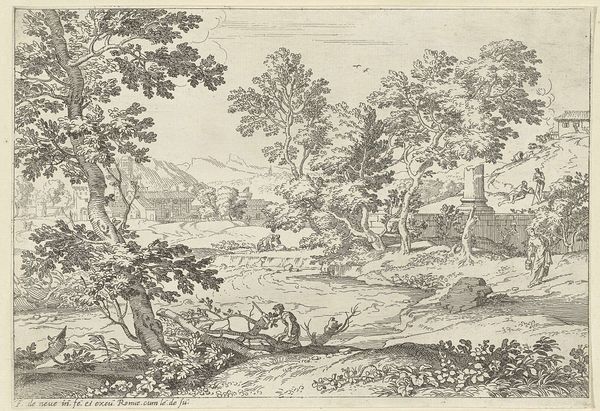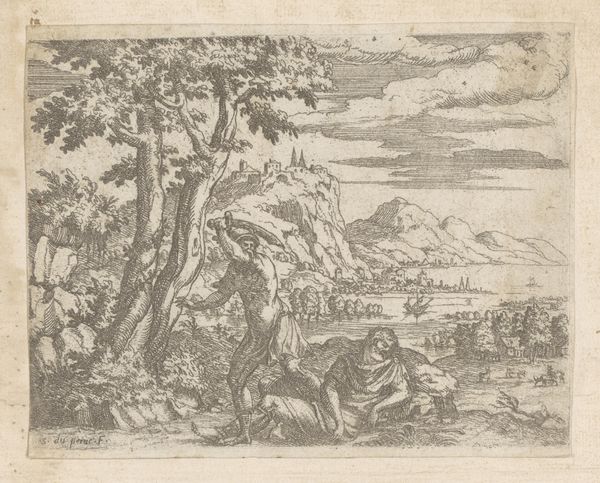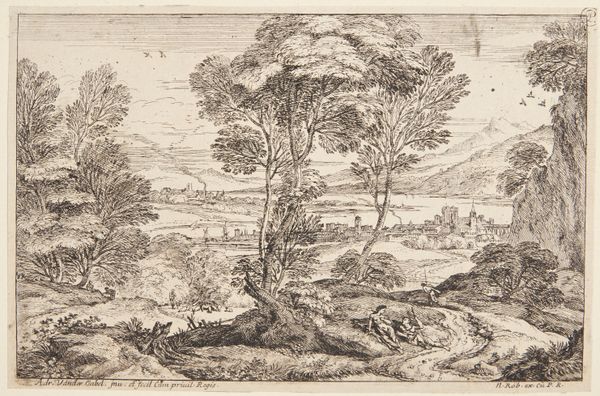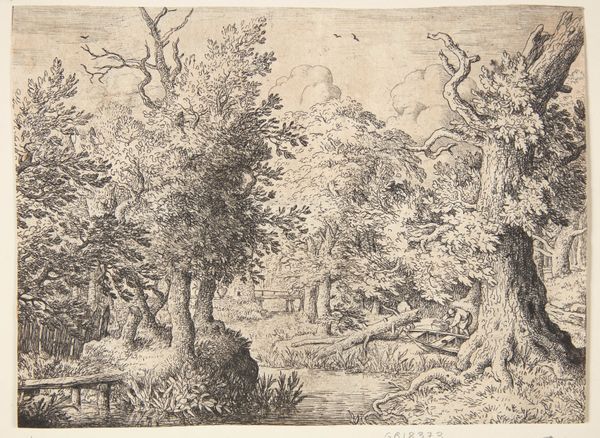
tempera, print, etching
#
ink drawing
#
baroque
#
tempera
# print
#
etching
#
landscape
Dimensions: plate: 22.4 x 31.5 cm (8 13/16 x 12 3/8 in.) sheet: 29.3 x 40.5 cm (11 9/16 x 15 15/16 in.)
Copyright: National Gallery of Art: CC0 1.0
Editor: This is "A Waterfall," a tempera, etching and print work from 1696 by Crescenzio Onofri. It strikes me as a very tranquil landscape. There is so much detail, but also so much open space, it makes my eyes wonder. How do you interpret this work? Curator: The cultural memory embedded within landscape imagery like this is quite rich. Think about how waterfalls are portrayed—are they places of escape, danger, the sublime? In Onofri's era, the Baroque loved drama, yet nature was being re-imagined and codified, with classical and idealised forms. Look closely; do you see the figure near the falls? Editor: I do! A person is near the base of the waterfall. What's the significance of that figure, in your opinion? Curator: I wonder if Onofri is perhaps alluding to the viewer’s role as an active participant. That figure is an invitation to engage with our emotions. Do you notice anything interesting about how the landscape and civilization intersect? Editor: Yes, the buildings appear built directly into the rock face, in the background, quite far from where that figure is! Curator: Indeed. In his landscape, he captures a world both ordered and wild, contrasting controlled architectural structures against nature's grandeur, reflecting a society grappling with control and freedom. I'd ask, "Where is humanity's place within that dialogue?" Editor: That’s a lot to consider. I suppose this piece says much more about humanity’s relationship to nature than I initially thought. Curator: Exactly. Onofri gives visual form to society’s long debate around power, civilization, and the untamed. It remains ever relevant, doesn't it?
Comments
No comments
Be the first to comment and join the conversation on the ultimate creative platform.
